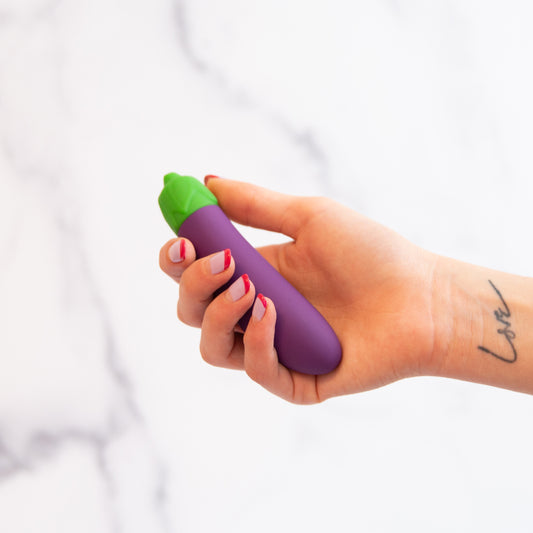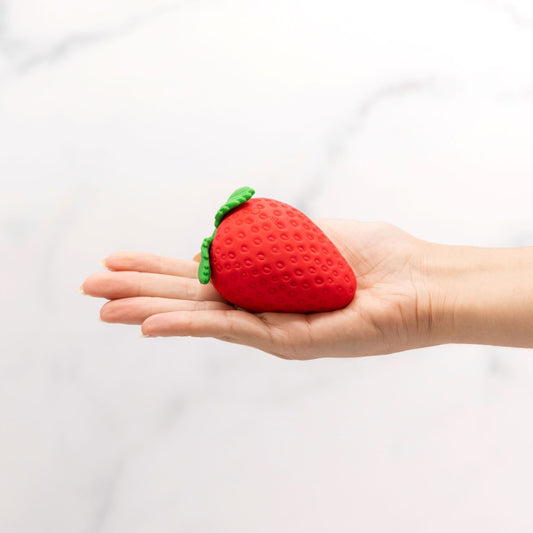“Bondage might be restraint of the body but, in its essence, it can, in juxtaposition, be freedom of the spirit and the mind.” - Lady Euphoria
What is Bondage?
In simple terms, bondage is binding or restraining of an object or a person. However, the practice of Bondage incorporates so many more elements than just that of, binding. In BDSM, the B stands for Bondage and historically, is coupled with D for discipline; when so, it speaks to a type of power play-based activity that revolves around restraint. It can have elements of decoration, sadomasochistic behavior, and roleplay. Some common examples of bondage include Japanese rope bondage, western rope bondage, leather bondage, mental bondage, and pallet wrap bondage. All these types include an element of binding while using different tools, scenarios, and sensations. Bondage is never limited to the materials or scenarios - it is an ever-evolving landscape for pleasure & adventure, it’s up to you to make what you’d like of it!
Some more types of bondage include device bondage, predicament bondage, suspension, material fetishism bondage, and constrictive bondage. These vary by experience and mood, hitting different notes of pleasure, pain, playfulness, catharsis, discomfort, excitement, and meditation.

So, how about Rope Bondage?
Rope bondage is a common type of bondage that gets much attention for its captivating look on the body and its gravity transcending ability. Rope bondage carries much personality, with how versatile rope can be in color and material, along with how it works against the body to slowly encapsulate it. Western Rope & Japanese Rope Bondage use both elements of decor and binding to build a visually engaging & yet, super sensory experience. Often, this type of practice can play with traditional ideas of balance and rigor, think, pain & pleasure, tension & movement, and symmetry & asymmetry. I’m sure you’ve seen a beautifully crafted photo with someone in rope and maybe you’ve thought, “Wow, that looks intense but, something about it feels weirdly calming.” What you’re reading is how the experience of rope emits depth and challenge, which is both objectively and subjectively engaging!
Once you understand that rope is more than just binding, you can then begin to craft your intentions for rope play. We all need a basis but, having an understanding of what the experience can look like is helpful and less intimidating. Like any other activity, you want to feel comfortable, and open to learning and transitioning. At its core, Playing with rope is about connection, connection with the material, and connection with the experience. How do we get there?
What experience are you cultivating?
In life, framing our experiences as cultivation can give us the autonomy and will to make of them as we see fit - finding what works, and what is ultimately, enriching. I like to approach any new activities in Kink or BDSM, with the same fashion, an honest intention, and curiosity! Since the rope is so versatile in terms of intimacy, sensory experience, creativity, and flexibility, the cultivations are truly endless.
Some Types of Bondage Experience
Bondage as a Sensory Experience
This experience is focused on how to use the rope to create a sensory-focused, sensory-heightened, sensory-lowering, or varied sensory experience. Think, do I want to feel gripped, softly held, tightly wrapped, scratchy, warm and fuzzy, cold, silky,...? Here, choosing rope that has a particular texture, grip, and stretch helps personalize the experience. For example, choosing a natural rope like hemp that is usually more textured and less finished, might feel a bit more scratchy and have a tighter grip than, let’s say nylon. This experience might also focus on how the rope is used; are you being restrained? Is the rope being dragged across your body? Are you being fully wrapped in the rope without any particular sense of direction? Is the rope the main sensory tool or is it an accessory to other sensory tools?
Bondage as a Restraint-Focused Experience
This experience is focused on restraint to create a constrictive, restrictive, immobilizing, or partially immobilizing experience. Now, there are many reasons why this one is desired but, some common reasons include simulating a ‘womb experience’, using a rope to remedy body anxiety & tension, and using rope as a stimulating physical challenge. Here, choosing rope, ties, and knots that help achieve your goal ex. Constrictive is important. For this type of play, building a good arsenal of rope knowledge and technique is essential!

Bondage as a Power Exchange Experience
This experience is focused on the exchange of power using rope as a vehicle and tool of that power. Here, the power play is the driving force to how the rope becomes a vehicle, whether, through restraining for restraining sake or restraining for discipline, for pleasure, for the challenge, for pain, etc,. Here, rope’s nature can be strategically used to elicit a variety of feelings and emotions. For example, in my professional practice, I strategically only use natural rope during rope rituals; natural rope has a very particular ‘bite’ and raw texture that can be intensely embodying. Simply, the rope makes you VERY aware of its presence. During my rope rituals, keeping my bottom or submissive in their bodies is essential for me to understand how they relate to themselves and their surroundings. I rely on the behavior of the rope (ex,. It’s gripping in certain places, and possible snagging in others) to help me read what is physically happening. For this experience, layering knowledge of intimacy, power play, and rope technique is the best way to achieve a wholesome session!
As you can see, rope can be so much more, depending on how you choose to use it. You may want to use a rope to create a solo intimate experience or just a fun interactive experience with others. You may use rope for purely decorative purposes and find yourself simultaneously, enjoying the feelings of restraint as well. Or you might just want to play with a new tool that pushes you out of your comfort zone. They’re all possible and can only get more fun and enriching with every layer you add to it!
Precautions, Safety & Risks
With every new tool, being informed is critical! Precautions and safety practices are great for being risk-aware and responsible. You should always know some basic anatomy and body function principles; for rope, specifically, knowing nerve locations, body sensitivities, body part vulnerabilities, body temperature points, signs of faint-headedness, pressure points, and skin coloration is ideal. Be aware of the body you are working with, its pre-existing conditions, its ability, its sensitivity, its size, its movement, and its responses. Before trying rope on others, practicing basics safely with yourself is important. Learn to pick up on your body’s responses and you’ll be better able to pick up on responses to others’ bodies. Encouraging communication on these topics is a must, too.
This activity also affects the mind and spirit so, being aware of how it can affect someone mentally and psychologically is another essential. Being restrained can elicit a variety of emotions which can cause an array of responses. Since we make associations to objects and activities, being aware of a person’s feelings around rope and being tied helps decide your approach. You can practice this with yourself, checking in, and asking yourself how playing with rope makes you feel about yourself, the activity, the material, and your environment.
Some more MUSTS,
ALWAYS understand your tool’s basics before using,
ALWAYS be hydrated - NOT under, NOT overhydrated,
ALWAYS set safety precautions (ex, Have a blanket nearby, have a person around, use easy release knots to get out),
ALWAYS have safety shears,
ONLY play with what you’re most comfortable with,
ALWAYS focus on feeling safe & secure before anything else,
ALWAYS inform yourself of pre-existing conditions,
ALWAYS communicate directly,
And, NEVER be afraid to stop, start over and take your time.
Negotiations & Active Consent: Playing with yourself & others
Expanding on safety, negotiations are the method to clearly outline what works, what doesn’t work, what is desired and everything in between. During negotiations, make sure to include physical, mental, and emotional limits around bondage, curiosities, preferred communication styles, safe word, if any, motivations for playing with rope, and intentions. These will better inform your play with others and yourself, as you incorporate a new tool. Remember, active consent is necessary for a mutually enriching time - keep consent continuous during your playtime, be honest and direct, designate moments to regroup, and check-in with yourself and others. Be vigilant with negotiations & consent! It’s more than asking if you can do something.

Time for Rope!
Rope comes in SO many textures, colors, and materials. Every type of rope has its specificities, factors, sensitivities, and handling requirements. The list of rope available in the world is exhaustive, however, we want to focus on a few main factors: texture, stretch, and strength. Those looking for more grip, better hold, and strength might want rope for intense ties, knots, or suspension. Whereas, those less concerned about strength and stretch, might be more concerned about the texture and want a rope that feels more pleasant on the skin, and is decoratively more, appealing. It’s not limited to those two options, so researching what you need is helpful. Both natural/raw and synthetic rope options can work for various play goals. For beginners, sticking to easy-to-clean, medium strength, and medium stretch is useful. The internet has an extensive list of resources on rope types but some beginner-friendly, easy-to-care, versatile rope materials include nylon, cotton, bamboo silk, MFP/polypropylene, and polyester.
Building a Basis
Understanding Tension & Friction: Tension and Friction are how rope is held in place and manipulated to create ties, harness, knots, and patterns. More specifically, tension speaks to how tight or pulled the rope is, while friction speaks to where and how rope pieces are being crossed. As you gain more rope techniques, these concepts become easier to understand and apply in your play.
Understanding Texture: Texture affects how the rope is experienced and how it interacts with itself and the body. The texture of a rope is the physical presence of the material. Its physical presence might be described using sensory elements; for example, raw hemp rope can be described as having a firm, hay-like, and scratchy texture. Some may even say, rope with thicker or more texture, might have ‘better’ friction depending on how it’s being tied. Physical properties affect how rope is experienced, so it all depends on specificity.
Understanding Body: The body of rope speaks to how it ‘holds’, its grip, its propensity for friction, its layers, its texture, and it’s appearance. A contrasting example would be comparing clothesline cotton rope to jute rope - cotton rope might be braided, stretch easily, soft, and weaker in strength with less propensity for friction, while jute rope might be thicker, doesn't stretch as easily, tougher in texture, and have more propensity for friction.

If you wish to get familiar with bondage, these concepts will serve as great bases for understanding the physics and presence of rope!
How do you start?
Choose your Tools: Find rope that appeals to your needs, specificities, and ideal play scenarios. Soft & colorful rope is great for bedroom play! Nylon rope & other synthetic ropes might be great for water or messy play! Hemp Rope might be great for supersensory rope play!
Choose your Intention: Choose if you want to make it FUN, SEXY, EXCITING, CALMING, MEDITATING, CHALLENGING, PLAYFUL, etc,.
Set the scene: Once you’ve decided, set the mood with a good and safe environment! Add layers of music, scent, comfort, or visuals to enhance your experience.

Build with base concepts, skills, & techniques
- Know your Rope: Bight describes the loop at the end of the rope when it is folded in half, the loose ends are called running/working ends. The anatomy of your rope is important when learning new knots & ties.
- Collapsing vs. Non-Collapsing Knots: Knots that are adjustable easily and don’t stay in place firmly, are considered easily collapsible while knots that are not adjustable and stay in place, are non-collapsing. To start, knowing a basic collapsable knot like ‘slip knot’ and a basic non-collapsible knot like ‘square knot’ is helpful.
- Rope Handling: Knowing how to pull, hold, and wrap the rope around the body is essential. To learn more about proper rope handling techniques, attending workshops, and watching tutorials by professionals can inform on the nuances of handling. You never want to drag rope across the body as it can lead to rope burn. You always want to run the rope through your hand, creating a boundary between you and the body. Never start with high tension or it can pose danger to the body and make the pressure uneven on the body. Low tension can cause the rope to fall, drag and ALSO, have uneven pressure.
- Constrictive vs. Restrictive: Knowing this difference is CRUCIAL. Go search this key concept before attempting an advanced or layered tie!
- Knots & Frictions: Understanding how knots and frictions work will help you build your rope layers. Knots help tie things off, keep a tie in place, and can be used decoratively. Frictions can help end things off, wrap leftover rope, and keep ties in place. They work together to keep your ties secured!
Ultimately, Practice patience, intentionality & curiosity! Be a forever student, take your time, and practice curiosity. Curious minds are always looking to learn more and experience MORE. That is super valuable for rope play & bondage.

Some Rope Arsenal Bases:
Single Column Tie *Don’t mistake for Slipknot
Double Column Tie
Larks Head Knot
Single Overhand Knot
Half Hitch & Double Half Hitch
Slip Knot
Square Knot
Cuffs
Moon Friction
Basic Chest Harness
*Adding Rope to Rope (Reverse Lark’s Head Knot)
*Storing Rope (Daisy Chain for Short-term Storage & Basic Wraparound/Coil for Long-term Storage)
After-Care
Aftercare is the time to bring the mind, body, and spirit down from the experience. Negotiate what this looks like for yourself, and your partner. Understand it varies from person to person, and solo-aftercare looks different from partnered aftercare. Some tips for rope aftercare include hydration, body tempering with a blanket or body warmth, physically holding the body and/ wrapped parts helps with readjusting to being unrestricted, wait 5-10 minutes before doing any rigorous movement, and deep breathing helps with mental drop and re-embodying.
Suggested Resources:
Shibari Study (Online)
Twisted Monk & Midori Youtube Tutorials (Online)
TheDuchy.com (Online)
RopeStudy.com (Online)
https://bound-together.net/rope-roundup/ (Online)
Better Bondage For Every Body by Evie Vane (Book)
Ultimate Guide to Bondage by Mistress Couple (Book)
The Seductive Art of Japanese Rope by Midori (Book)
Back on the Ropes by Two Knotty Boys (Book)
Meet Lady Euphoria: Lady Euphoria is an NYC-based Holistic BDSM practitioner, Professional Dominatrix, and Kink Educator. As her self-proclaimed title reads, NYC Power Dynamics Practitioner, she specializes in power dynamics and exploration. While her work is framed around Intentionality and Growth, her dogma centers ideas of self-discipline, inner transformation, and inner voice work. One of her well-received concepts, 'Self-Domination' is the practice of recognizing inner dual voices, that of the submissive and that of the dominant; Working these voices as tools for self-discovery and mastery. With wholesome and accessible approaches, Lady Euphoria continues to be a regarded member of the kink community, bringing accessible BDSM education with a down-to-earth holistic flare.
To learn more about Lady Euphoria and her practice, visit her website ladyeuphorianyc.com/coming soon and Instagram @ladyeuphorianyc





